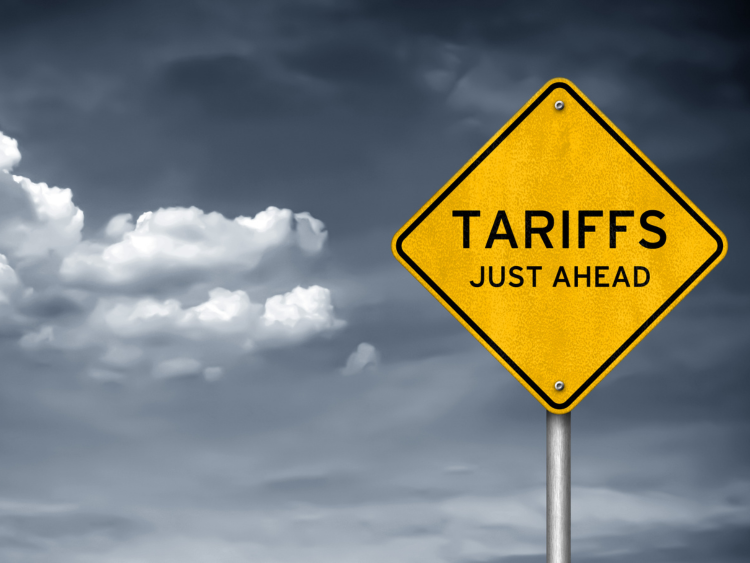Trade Cases
Leibowitz: US-EU Fail To Compromise, Deadlock on Steel and Aluminum
Written by Lewis Leibowitz
October 29, 2023
The long-anticipated US-EU summit took place on October 20. There was wide anticipation that the two sides would announce a partial agreement on steel and aluminum policy and perhaps an agreement on critical minerals, such as lithium for electric vehicle batteries. Even modest accomplishments such as these were not to be.
Instead, the US and EU at the summit (between European Commission President Ursula von der Leyen and US President Joe Biden) came up with no new agreements but instead a rather tepid and lengthy (~3,900 words) joint statement. The two sides agreed to keep talking without even a partial agreement on steel and aluminum. Thus, traders, manufacturers, and transportation providers will not know whether steel and aluminum tariffs will snap back into place in January (postponed from the end of October 2023) or whether the “tariff rate quota” regime agreed to in 2021 will continue.
With numerous global crises, one would have thought (I certainly did) that the US and the EU would have seen the urgency of resolving their disagreements. That would have shown the world that they could focus on the immediate issues facing them by resolving differences over less immediate issues. Again, this was not to be.
Given the failure to narrow differences on steel and aluminum, in the setting of a meeting at the highest levels of government, we must wonder what it will take to resolve these differences.
The parties long ago agreed to address two broad issues: (1) the excess capacity for “non-market economy” steel and aluminum production; and (2) creating a “clean” steel and aluminum framework to promote reduction of carbon emissions in those two sectors. Sounds easy enough at first glance.
The excess capacity issue, according to some familiar with the negotiations, foundered on the insistence of the EU that it would impose restrictions only after an investigation of China’s and other nations’ practices regarding subsidies for increased production. The United States reportedly wanted the EU to restrict imports before completing an investigation because the probe would have taken at least several months.
The clean steel and aluminum issue reached an impasse because of differing approaches to the problem. The best way to clean up steel and aluminum production, according to the US side, would be to impose tariffs and other import restrictions on steel and aluminum that were not as clean as the US norms.
The EU side implemented an emissions trading system that features a “carbon border adjustment mechanism,” or CBAM, based on whether the exporting country placed a price on carbon emissions. The US, which has no plans to impose such a “price on carbon,” objected because the CBAM would have hurt US exports of steel and aluminum to Europe.
Other details also derailed the chances for even an interim agreement. The US wanted the Europeans to back away from the CBAM approach. The EU insisted that the US forgo resumption of the Section 232 “national security” tariffs on steel and aluminum imports—or at least commit to a schedule for phasing out the measures. This the US was unwilling to do.
In the meantime, the air isn’t getting cleaner, and the massive threats to the global order of collective security and peace (Ukraine, the Middle East, Taiwan, etc.) are getting more intense each day. A tiff over the details of steel and aluminum policy is not even a tempest in a teacup—it’s a tempest in a thimble.
As Alan Beattie put it in the Financial Times last week, “the whole world trading system would be a lot better if the steel industry didn’t exist.” By that, he means that the industry fights over issues that no longer matter nearly as much as they did when the US and EU were the world’s largest producers. The US, for example, accounted for 50% of global steel production in 1950. It accounted for less than 4% in 2022.
The industry in the United States fights far above its relatively minor role in the US economy. That’s largely due to the political stalemate in several steel states, such as Ohio and Pennsylvania, and the advocacy skills of the steel trade associations and the United Steelworkers (USW) union. These factors compel the US administration to carry the industry’s water in talks with the EU and others.
These factors will probably not change in the next three months. But the geopolitical situation could change a lot—for the worse.
In the United States, the 2024 election looms. The EU is clearly aware that in a little over a year’s time, they could face a President Trump, who could rip up any deal the EU makes with the Biden administration. That is why the EU is insisting on an end to the Section 232 tariffs, rather than merely a continued suspension.
The EU has its own issues with the democratic process. There are increasing doubts about the EU’s emission trading system and the CBAM. If the changing climate is the existential threat that some claim it to be, relying on a “price for carbon” as the driver to clean up the atmosphere is not going to be enough.
Perhaps the deteriorating world situation will spur the US and EU to reach an agreement on steel and aluminum that will make real progress. The “critical minerals” negotiations, which also were sacrificed because of the failure to agree on steel and aluminum, might be resurrected. But right now, the future looks pretty bleak for agreement on these issues, unless external circumstances compel true compromises.

Lewis Leibowitz
Read more from Lewis LeibowitzLatest in Trade Cases

Industry piles on new Section 232 steel derivative inclusion requests
The Department of Commerce received 97 submissions from producers, manufacturers, and groups seeking Section 232 tariff coverage for steel and aluminum derivative products.

Price on Trade: New EU steel tariffs don’t mean the US should weaken its stance
Any steel imports into the EU that exceed the new, lower quota level would be subject to a 50% tariff, which represents a major increase from the EU’s current 25% out-of-quota tariff. This move would largely align the EU’s steel tariff rate with Canada and the United States.

Global steel forum sets 2026 framework deadline as US ups pressure on excess capacity
Global steelmakers sounded the alarm Friday over the deepening excess steelmaking capacity crisis. Ministers at the Global Forum on Steel Excess Capacity (GFSEC) in Gqeberha, South Africa, pledged to...

CRU: China’s indirect steel exports find new destination markets
The boom in China’s direct steel exports has not stopped this year, even with a rise in protectionist measures globally. The increase is driven by...

U.S. Steel sues Algoma over iron pellet shipments
U.S. Steel is suing Algoma over the Canadian flat-rolled producer's rejection of iron pellet shipments, arguing it has breached its contract.
